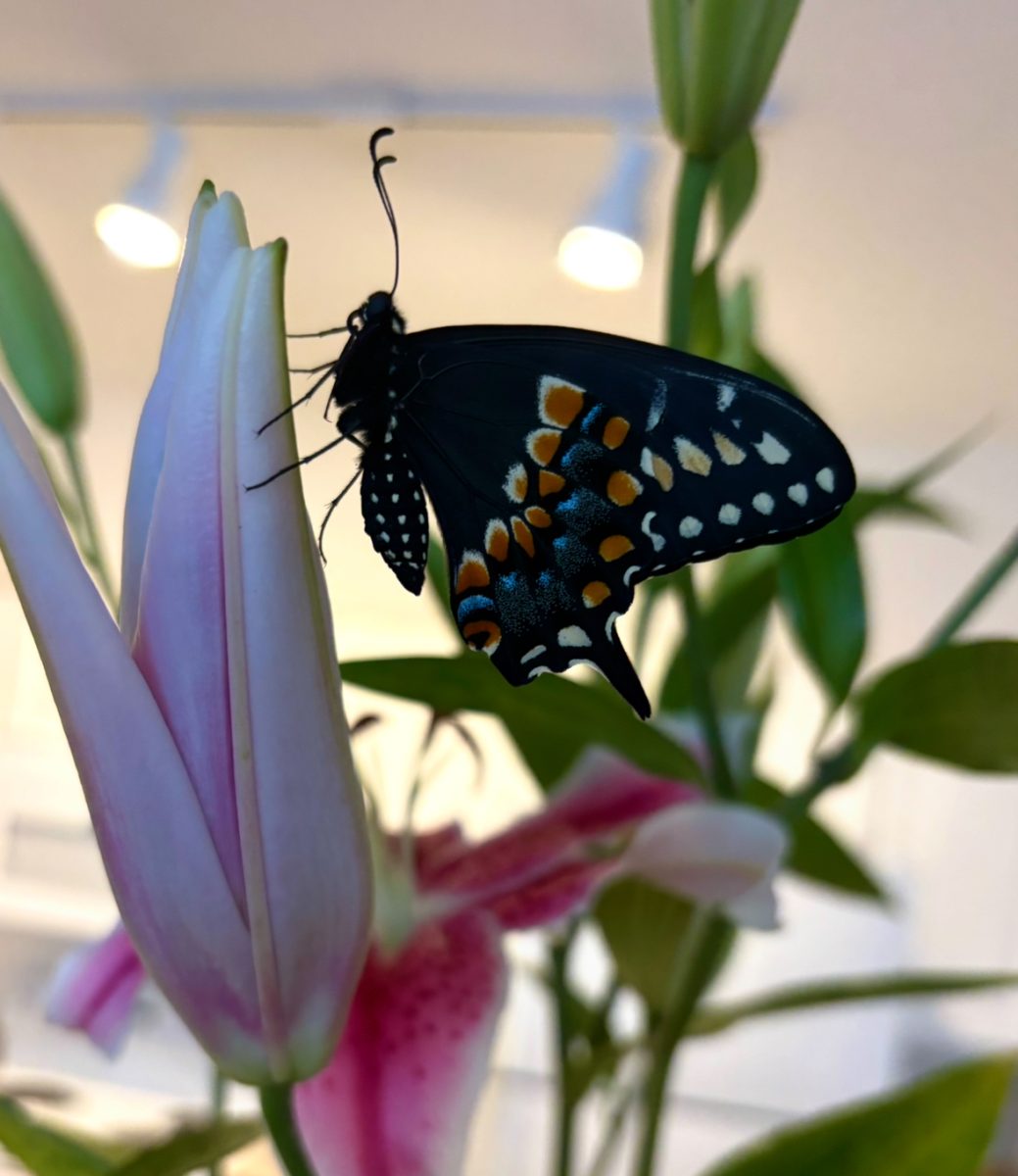Across Kent State University’s gardens and green spaces, various butterflies flutter through the air. From the tiny common buckeye and silver-spotted skipper to the striking red-spotted purples and swallowtails, they’re easiest to spot on warm, sunny afternoons when flowers are in bloom. However, many can still be found throughout autumn. They live as caterpillars, currently, as they wander around campus, searching for a safe place to pupate.
Ecology professor Thomas Franzem said fellow insect enthusiasts can see many of these species on campus.
“There’s a pretty good diversity of stuff around campus,” Franzem said.
Butterflies gather around the Brain Book Garden, the Recreation Center Prairie and the pollinator garden behind Cunningham Hall, where a wide variety of native flowers make for reliable viewing spots.
“So, you know, insects are cold-blooded,” Franzem said.
Butterflies are most active throughout the morning and early afternoon, when temperatures reach 60 degrees and above.
Ohio is home to more than 140 butterfly species, according to Ohio Magazine. Their caterpillars depend on host plants such as oak, birch, tulip, magnolia and milkweed — all of which are scattered throughout campus.
“Around this time, we’re seeing a lot in the family Pieridae,” Franzem said.
Pieridae is a vast family of butterflies with over a thousand species, some of which you can see in Ohio like the cabbage white or the orange sulfur.
Kent State has earned recognition for its pollinator-friendly landscaping and received its certified Bee Campus USA designation several months ago, joining a national network of colleges that are committed to pollinator conservation. This designation from the Xerces Society is no easy feat, but advocates suggest more can be done.
“You can reach out to student government representatives and tell them that you would like to see more pollinator gardens or more native landscaping on campus,” Franzem said.
Butterflies play a crucial role in the ecosystem beyond just pollination.
“They’re also a primary food source for a lot of other animals. Birds, amphibians and reptiles eat insects, including butterflies or their larvae,” Franzem said. “If we see significant declines in butterflies, that other stuff will suffer as well.”
However, butterflies and their larvae are plagued by a host of issues from parasitic wasps and bacterial infections to the spread of invasive plants that displace and kill native species that caterpillars and other insects rely on.
“The biggest threat to butterfly populations is habitat conversion,” Franzem said.
Still, butterflies play a role in much larger ecological systems and even human society.
“In a lot of ways, butterflies are touching different aspects of the ecosystem and just more broadly, insects in general are impacting literally every aspect of human society, whether we recognize it or not.”
Even in their caterpillar stage, butterflies influence the natural world. Their larvae feed on leaves, affecting plant communities and gradually changing how ecosystems function over time.
“They have an innate right to exist, right?” Franzem said. “I mean, they’re living things like we are, and they were here before we were, and they’ll be here after us, probably. So they just have a right to exist as a species and continue on.”
Audra Florey is a reporter. Contact her at [email protected].


